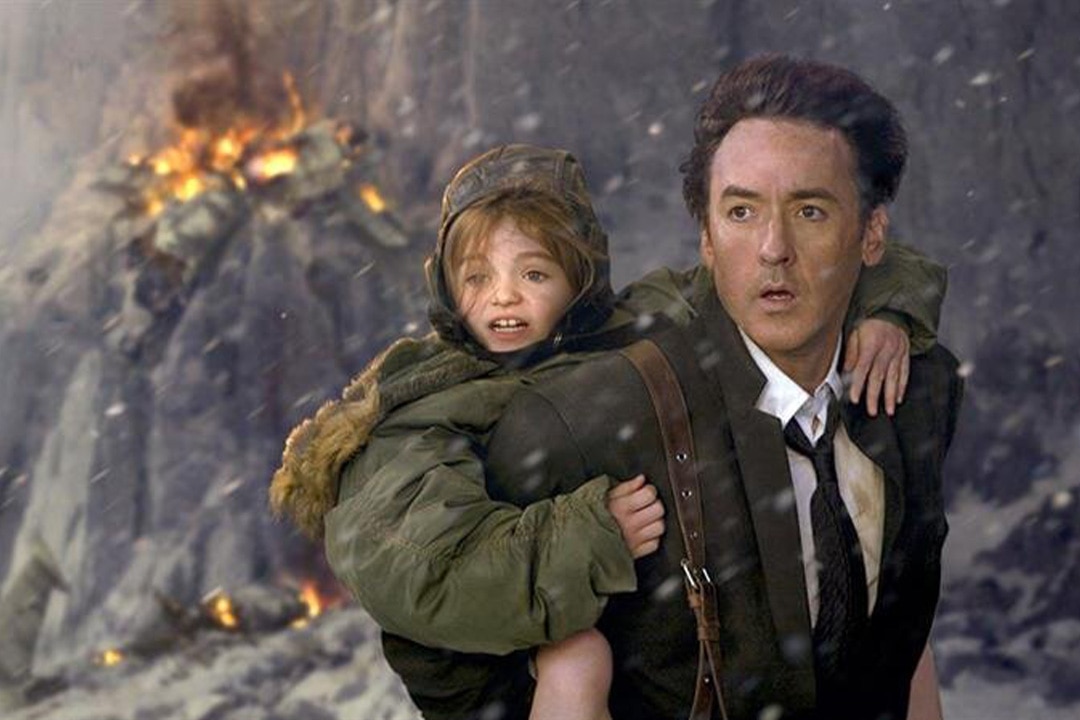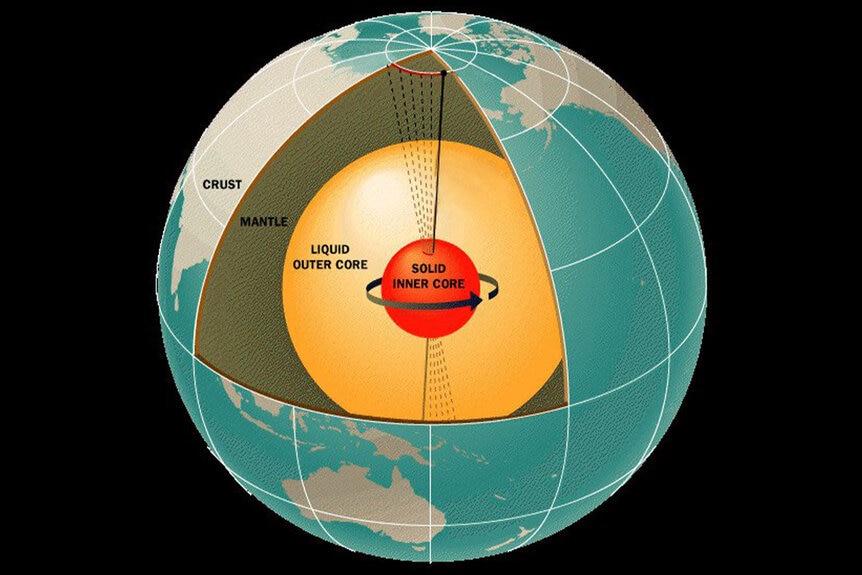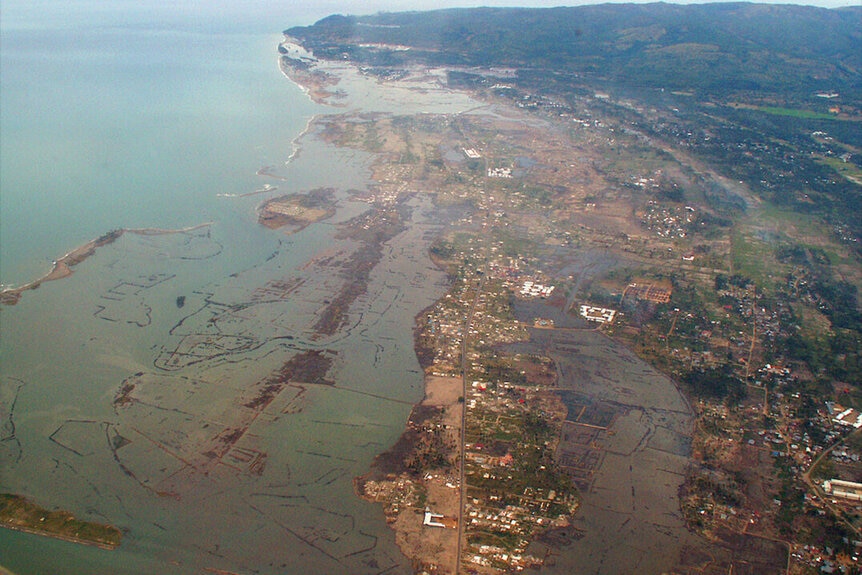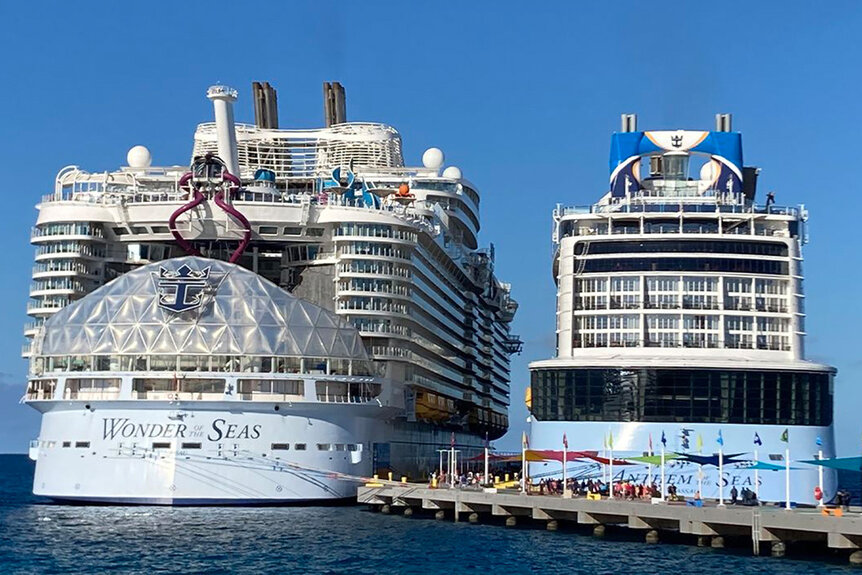Create a free profile to get unlimited access to exclusive videos, sweepstakes, and more!
Neutrinos & tsunamis! Making sense of '2012's apocalyptic science
An apocalypse several thousand years in the making!

Humans get weird about numbers. The years leading up to and immediately following the new millennium were pockmarked with conspiracy theories about some dramatic reality shift, potentially even the end of the world. There was a feeling in the air that somehow changing the number at the front of the calendar had forcibly pushed us into some grand or horrible future.
When Y2K failed to drop planes out of the skies and crumble world infrastructure, there was still hope on the horizon for the aspiring post-apocalyptic survivor. To understand why, we need to travel back in time to the height of the Maya civilization. According to our best current understanding, the Maya believed that the world goes through ages, one after another. One interpretation of their beliefs suggests that the gods attempted three times to make the world but failed. Each failure represents one of the first three ages of the world. On the fourth attempt, the gods succeeded, and humanity populated the earth.
The Maya believed themselves in the midst of the fourth age, a cycle of time spanning more than 5,000 years. Their calendar begins on what we would call August 11, 3114 BC. To them, it was the first day. From there, the calendar stacks up thusly: 20 days is equal to one uinal, a unit of time roughly equivalent to what we think of as months; 18 uinals make a tun. This comes out to 360 days, or roughly a year; 20 tun make a k’atun and 20 k’atun make a b’ak’tun, a period of time stretching nearly four centuries. The Maya’s long calendar stretched from that first day in 3114 BC through the end of the 13th b’ak’tun, which some have interpreted as the end of the fourth age and the beginning of something new. That 13th b’ak’tun ended December 12, 2012.
RELATED: Ranking Roland Emmerich’s disaster movies, from ‘ID4’ to “Moonfall’
The question was what the end of the fourth age meant to the Maya and what it might mean for those of us who would live to see its fulfillment. Some believed it would herald the dawning of a bright new future when humanity would transcend its current form to become something greater. Others believed the current world would end, just like the three which came before, to make room for whatever was to come next. Of course, none of that happened (unless this is purgatory right now!) but that didn’t stop us from worrying about it from behind a bucket of popcorn at the movies.
And moviegoers did just that when Roland Emmerich’s 2012 (streaming now on Peacock!) hit theaters in 2009, to the tune of $791 million. While the world didn’t end when the Mayan calendar turned a page, could a similar apocalypse come for us sometime down the line? Let’s find out.
A NEW KIND OF NEUTRINO?
Discovering new types of particles isn’t unheard of and there’s plenty we don’t know about neutrinos, but they would have to undergo an incredible and fundamental transformation in order to do what they do in the movie. In 2012, a new type of neutrino begins streaming out of the Sun after a bizarre solar flare. The neutrinos heat the Earth’s core, triggering a whole host of problems all over the globe.
In reality, neutrinos have very little mass and only interact nominally through the weak force and gravity. As a result, they pass right through matter without interacting at all, at least most of the time. Neutrinos are created as a natural consequence of high energy activities like the fusion occurring inside of stars, supernovae, neutron stars, and cosmic rays. Most of the neutrinos you’re likely to encounter come from the Sun and there are a staggering number of them.
It is estimated that, during any given second, approximately 100 trillion neutrinos are passing through your body. They’re so small and so non-reactive that they fly through your flesh like a grain of sand fired down an empty hallway. Plenty of room.
However, the more matter they travel through, the more opportunity there is to bump into something and have a reaction. Scientists using highly specialized detectors buried in polar ice have observed a decrease in high-energy neutrinos hitting the detector when they pass through the Earth, and the probability that an individual neutrino makes it through decreases as the amount of Earth it’s passing through increases. Moreover, they found that neutrino absorption was most likely to occur inside of the core, owing to its comparatively high density.
It appears that neutrinos with higher energies (higher than we typically see coming from the Sun) interact with matter a little bit more than neutrinos with lower energies. That said, the amount of interaction is still incredibly small. The vast majority of neutrinos, high energy or otherwise, pass through the Earth with both parties unscathed. Certainly, when a neutrino interacts with matter, some amount of heat is generated, but it isn’t enough to matter especially when compared with the intense heat and pressure already present there.
GLOBAL TSUNAMI?
Let’s assume that neutrinos do suddenly decide to raise the temperature on our lonely planet or that the core heats up through some other means. What happens next? Well, as we see in the movie, that heat makes its way from the core and into the liquid mantle.
The thermal energy added to the system sets off a series of earthquakes and volcanoes all over the planet. Those disasters, in turn, trigger tsunamis at the epicenter of each eruption or shake-up. These killer waves threaten to wipe a cleansing hand across the whole of the Earth, erasing humanity and every other terrestrial creature off the face of the planet.
RELATED: Could 'Knock at the Cabin's Pacific Northwest tsunami really happen?
There is some precedent for this sort of thing on Earth, and it too came from the cosmos. Sixty-six million years ago, on an otherwise ordinary day, an asteroid came unannounced and uninvited and parked itself permanently in the Gulf of Mexico. The impact rocked the Earth so roughly it was shaking for days afterward. According to recent simulations of the impact, the asteroid dug a hole 10 kilometers into the Earth’s crust, creating a wall of debris 40 kilometers high.
As energy from the blast radiated outward, a wall of water a mile high surged out from the epicenter. Over the course of the next two days, every coast on the planet was struck to varying degrees by the asteroid-triggered global tsunami.
In modern times, tsunamis are regularly triggered by earthquakes and volcanoes, so it stands to reason that if every fault line on the planet decided to throw a temper tantrum all at once, it wouldn’t be good. However, those waves would not drown the world in a global flood. Redistributing the water doesn’t create more of it. It would be bad, to be sure, but it wouldn’t be species ending. Probably.
ARKS
That said, given the threat of volcanoes and earthquakes mixing up every inch of solid ground, getting onto a boat might not be the worst idea. In the movie, world governments band together to build a fleet of arks, each capable of harboring 100,000 people, totally in secret. While there’s nothing physically impossible about that, it’s unclear if we could actually pull it off.
At the time of this writing, the world’s largest passenger cruise ship is the Wonder of the Seas, the flagship of Royal Caribbean International. It stretches 362 meters (1,188 feet) and has 18 decks. At maximum capacity it can carry 6,988 passengers in addition to 2,300 crew members need to keep the ship running. It carries a total of 9,288 souls, which we’ll round up to 10,000 on the assumption that in a pinch (like the end of the world) they would find some room. At that rate, we would need 10 of those ships for every ark we see in the movie.
Construction of the Wonder of the Seas began in May of 2019 with a planned delivery date of spring 2021. The pandemic slowed things down and the ship was delivered a year late, in the spring of 2022, but assuming it had gone to schedule, we would need 20 years to build enough room for 100,000 people, assuming we built the ships one at a time, which of course we wouldn’t. But it presents some interesting problems.
Some of those are problems of scale. Larger ships can get away with a smaller crew to passenger ratio. Having 10 smaller ships means 10 comparatively larger crews, leaving less room onboard for civilians. There’s also the matter of actually riding out the apocalyptic waves, something larger ships are better at handling.
We are probably capable of building the sorts of ark ships that could keep the species alive during a global calamity, but we would have to bend a considerable portion of the planet’s will and resources toward it to pull it off. It’s probably not something you could do both quickly and quietly.
Hopefully we’ll never have to find out. Experience the apocalypse vicariously, the way you were meant to, in 2012, streaming now on Peacock!





























